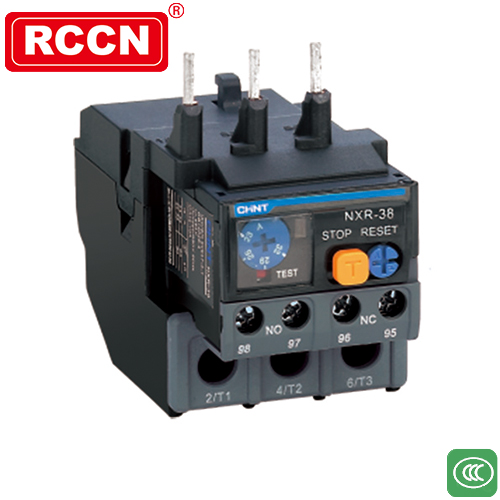
Thermal relay is the most common electrical control component that everyone comes into contact with. It mainly protects the motor and prevents the motor from overloading. Thermal relays are mostly cheap, economical and practical. The motor protection circuit breaker (also called motor protection switch) is used to protect the three-phase cage asynchronous motor from overload, short circuit, phase failure and infrequent start and stop control. It can be used for power distribution line protection and infrequent load. It can also be used as an isolator, and can also be used with accessories such as alarm contacts, shunt releases, and undervoltage releases.
The main difference between the two is the different working methods and principles, although they can protect the motor and prevent overload. But the principle of the thermal relay is: the current flowing through the heating element generates heat, which deforms the bimetallic strips with different expansion coefficients. When the deformation reaches a certain distance, the connecting rod is pushed to move to make the normally closed contact on the thermal relay open , And this normally closed contact is connected in series to the control circuit of the motor contactor. After the normally closed contact is disconnected, the coil of the contactor will lose power, and the main contact of the contactor will be disconnected, thus realizing the overload protection of the motor. .
The principle of the motor protection circuit breaker is: when the motor protection circuit breaker is working normally, the handle is pressed to turn on the power, and the tripping mechanism is locked at this time, and the contact cannot be moved. When the current is too large, the bimetal strip deforms and pushes the lock. When the instantaneous current is too large, the iron core is sucked and the lock is pulled by the drawing pin. When the internal temperature rises too high, the deformation of the bimetallic strip is compensated, and the contact is disconnected under the action of the release spring to complete the breaking protection function of the circuit breaker for motor protection. We have seen that the motor protection circuit breaker is a comprehensive electrical switch that directly integrates the thermal relay and the circuit breaker. Just because it is directly installed on the main power supply circuit of the motor, when it feels overcurrent and other situations, it directly disconnects the main circuit instead of disconnecting the main circuit through the contactor.
So based on the above, the summary is that the thermal relay can not be used alone in the main circuit, and must be used together with the contactor. The motor protection circuit breaker is more advanced than the thermal relay and can directly switch the main circuit. It can be directly connected to the motor without some control loops such as start-stop switches. Another point is that the motor protection circuit breaker integrates the functions of a circuit breaker and a thermal relay, which reduces the space occupied, and is more suitable when many motors need to be controlled in a control cabinet.
















 RCCN WeChat QrCode
RCCN WeChat QrCode Mobile WebSite
Mobile WebSite